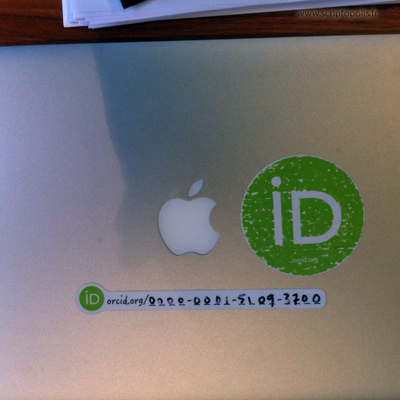Names/Numbers
Paris, may 2014.
A group of international experts meet in a workshop about research assessment. Their discussions are at a very advanced stage, in particular regarding the traditional bibliometrics indicators based on citation in peer-reviewed journals compared to the challenging metrics dedicated to attention and audience. No one pays attention to the mere inscription displayed on the back of one speaker’s laptop. However, such an ID number might provoke a breaking move in academia. Names have been attached to scientific claims since the rise of academic journals in the XVII century. Scientists’ names have been conceived as the cornerstone of knowledge production in order to resolve priority issues and attribution disputes.
With the move to electronic publications and to repositories of preprints or published papers, homonyms have recently arisen as a growing matter of concern. How to be sure that a piece of work was produced by the right “Mary Smith”? In a context where the adage “publish or perish” seems to be stronger than ever, appropriate citation goes hand in hand with reliable references. Providing a persistent digital identifier to each individual researcher, ORCID negotiates the implementation and interoperability of its identifiers registry with many other databases, manuscript soumission systems, published articles in some journals, patent or grant applications.
Such a technical innovation does not only solve homonyms issues. It would simultaneously support a renewal of scientific contributors’ proprieties. Like every juridical person made of a name and a number, scientists’ names would be firmly attached to a set of numbers. Thus, the scholarly attribution would be articulated to a form of identification that would facilitate transparency in credit attribution, but also control and surveillance in responsibility ascription.







